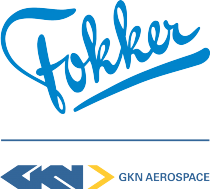Global Automotive Lubricants Market 2021 to 2026: Chevron, Motul, Exxon Mobil and BP Dominate - ResearchAndMarkets.com
The "Automotive Lubricants Market - Growth, Trends, COVID-19 Impact, and Forecasts (2021 - 2026)" report has been added to ResearchAndMarkets.com's offering.
The automotive lubricants market size was estimated at around 20 million metric ton in 2020, and the market is projected to register a CAGR of over 2.5% during the forecast period (2021-2026).
The market was negatively impacted by COVID-19 in 2020. The declining automotive industry, along with the temporary shutdown of automotive manufacturing units and various industrial activities due to the ongoing pandemic scenario, has declined the consumption of engine oil, gear oils, and greases, thus creating a negative impact on the demand in the automotive lubricants market.
Key Highlights
- Over the short term, the growing adoption of high-performance lubricants is expected to drive the market's growth.
- On the other hand, extended drain intervals of lubricants and the modest impact of electric vehicles (EVs) are expected to hinder the market's growth.
- Engine oil dominated the market, and it is expected to continue the growth during the forecast period.
- Asia-Pacific dominated the market, followed by North America and Europe across the world with the largest consumption from the countries, such as China, India, the United States, and Russia, among others.
Key Market Trends
Increasing Usage of Engine Oils
- Engine oils are widely used to lubricate internal combustion engines and are generally composed of 75-90% base oils and 10-25% additives.
- They are typically used for applications, such as wear reduction, corrosion protection, and smooth operation of engine internals. They function by creating a thin film between the moving parts for enhancing the transfer of heat and reducing tension during the contact of parts.
- Between technology improvements and government-mandated fuel economy requirements, automakers have been manufacturing light vehicles with tight tolerances, which makes them more durable.
- High-mileage engine oils are in demand lately, owing to the properties that help in the prevention of oil leaks and the reduction of oil consumption.
- The light motor vehicles segment has the highest consumption rate of engine oils among all segments.
- Heavy-duty motor vehicle engine oils are high-viscosity engine oils, which are used in on-highway and off-highway heavy vehicle applications. These engine oils are manufactured to help sustain extreme geographical and strict emission standards.
- Up to Q3 of 2019, about 67.47 million vehicles were produced globally and has reached about 52 million vehicles up to Q3 of 2020, registering a decline rate of about 23%, thus led to a decrease in the demand for engine oils, greases, and others, which, in turn, negatively impacted the market growth of automotive lubricants.
- Most of the light and heavy vehicle diesel and gasoline engines use 10W40 and 15W40 viscosity-grade oils.
- As of Q3 2019, about 15.37 million light commercial vehicles were produced globally and reached about 11.79 million till Q3 2020, registering a decline rate of about 23.2%. Thus, this led to a decrease in the demand for engine oils, which in turn, negatively impacted the market growth of automotive lubricants.
- The average age of vehicles has been increasing at a constant rate over the years. This factor provides an opportunity in terms of the refill market. The increasing average age of passenger cars and the growing urban population in the developing countries are the factors expected to drive the market for engine oils.
- Owing to the increased engine oil change intervals, technological advancements are imposing a threat to the growth of the engine oil segment in terms of volume consumption. Therefore, the aforementioned factors are expected to show a significant impact on the automotive lubricants market in the coming years.
Asia-Pacific is Expected to Dominate the Market
- The Asia-Pacific region dominated the global market share. In the region, China is the largest lubricant market and is expected to remain so in the coming years, irrespective of the economy witnessing slow economic growth.
- The government is focusing on replacing obsolete vehicles, in turn, increasing the demand for improved and high-performance lubricants. At the same time, India is the second-largest lubricant market in the region and the third-largest in the world.
- China is the world's largest automotive producer. As of Q3 2019, China had produced 18.17 million vehicles and reached 16.96 million vehicles by Q3 2020, registering a decline rate of about 6.66%, which negatively impacted the demand for the regional automotive lubricants market.
- Indonesia is one of the major consumers of lubricants in the ASEAN region. Japan is the fifth-largest consumer of lubricants in the world.
Companies Mentioned
- AMSOIL INC.
- Bharat Petroleum Corporation Limited
- BP PLC (Castrol)
- Chevron Corporation
- China National Petroleum Corporation
- China Petroleum & Chemical Corporation
- ENEOS
- Exxon Mobil Corporation
- FUCHS
- Gazprom Neft PJSC
- Gulf Oil Lubricants India Ltd (Hinduja Group)
- Hindustan Petroleum Corporation Limited
- Indian Oil Corporation Ltd
- LUKOIL
- Motul
- Petrobras
- PETRONAS Lubricants International
- Phillips 66 Company
- PT Pertamina Lubricants
- Repsol
- Royal Dutch Shell PLC
- SK Lubricants Co. Ltd
- TotalEnergies
- Valvoline Inc.
- Veedol International Limited
For more information about this report visit https://www.researchandmarkets.com/r/r14bwf
View source version on businesswire.com: https://www.businesswire.com/news/home/20211222005217/en/




